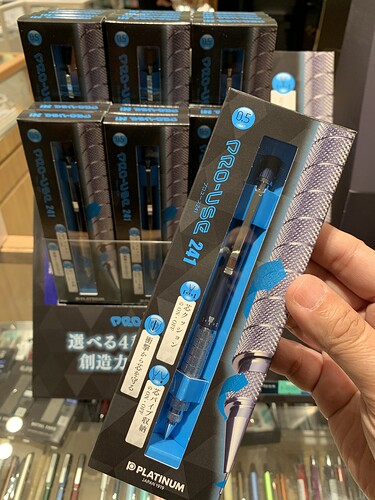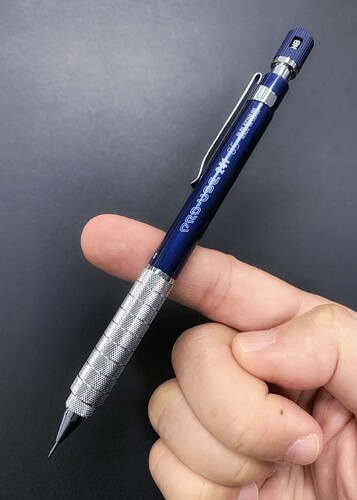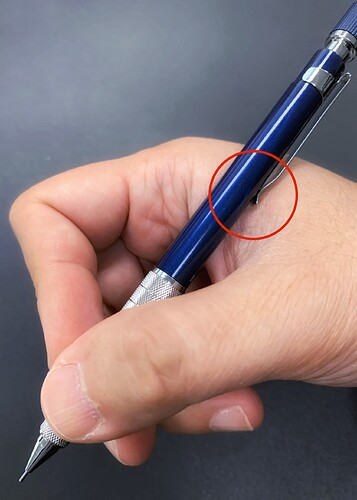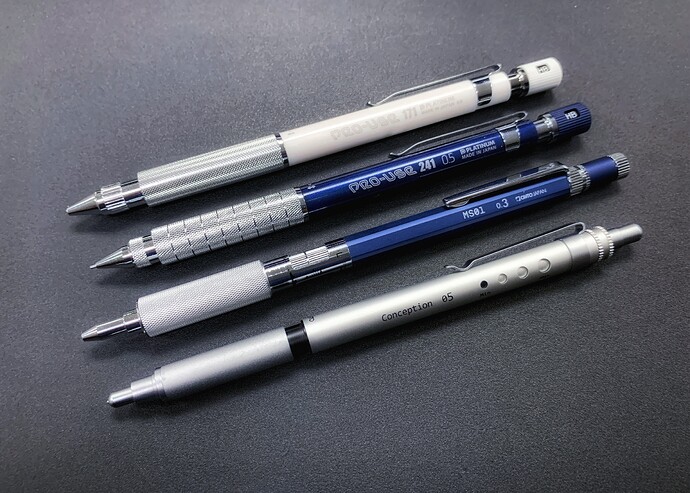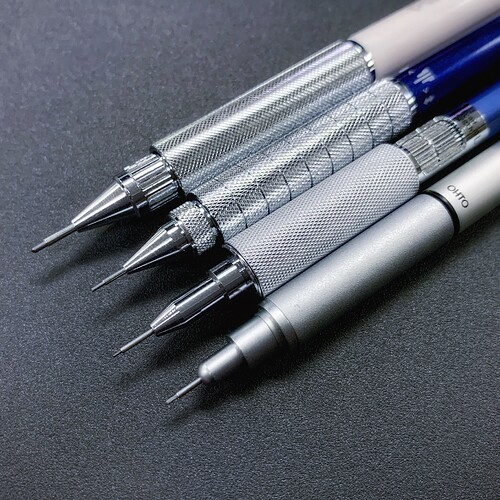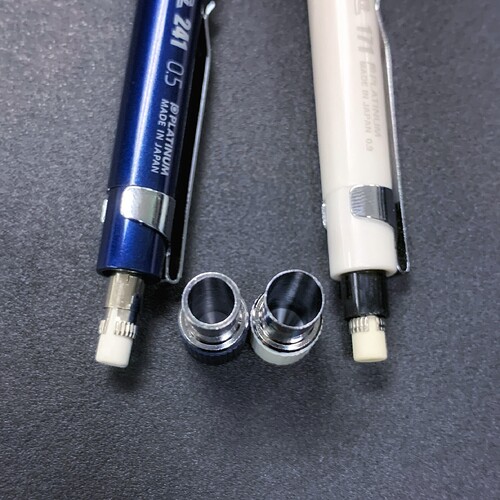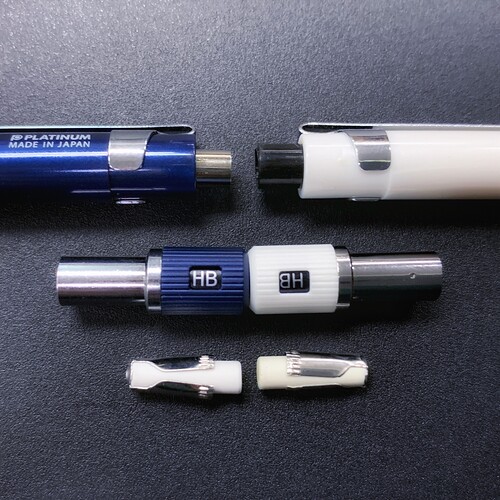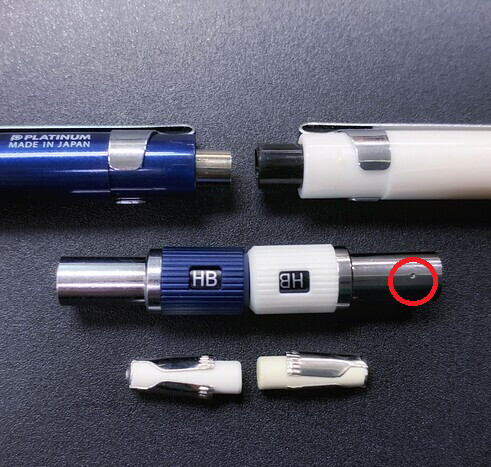Platinum’s latest offering, the PRO USE 241, just dropped at THINK, possibly the best speciality stationery store here in Singapore. The retail price is a rather stiff SGD 45, but you can find it for about 2,500 to 2,800 JPY direct from Japan.
I am not one to measure my MPs with calipers or even to weigh them, but the grip is almost / probably identical to that of the preceding Pro Use 171, and also very similar to OHTO’s MS01. The balance point is at the ON/OFF markings used to indicate the cushioning mode. And while the button is very similarly sized to the 171’s they are not interchangeable. For what it’s worth, the 241’s end piece of the lead reserve tube that connects to the button is metal, unlike the 171.
I have taken to calling it PU241, and I really thought it was a subconscious pun to create an outsized impact for Platinum’s MP sales. But in fact, the press release states that since 2017, the 3-digit naming convention for the Pro Use series has been as follows: the first 2 digits refer to the year of release, followed by a single digit indicating the order of release. So 171 = 1st Pro Use model released in 2017. The other thing that Platinum saw fit to retain is their ‘signature’ metal clip, whose kinked end always manages to poke me as I do the manual ‘kurutoga’ finger dance.
Ok, how does it perform vis a vis its closest competitors? I found the 241’s mix of technical features to be a combination of those found in the 171 and OHTO Conception, and to a lesser degree, the MS01.
I will start with the feel of the grip: Amongst these 4 designs, the grippiest is the 241, followed closely by the MS01. The 171 is too smooth by comparison, and the merely ‘roughened’ processing on the Conception is the worst.
Looking at the tips, all of them have the ability to retract their guide pipes to different degrees. The 171 and MS01 can fully retract their pipes. The other two however leave a minuscule amount of about 1mm protruding on the 241 and 0.5mm on the Conception.
When the pipes are fully extended, the 171 and MS01 reach the standard 4mm for drafting designs. The 241 and Conception only reach 3mm. Thus, in slide pipe mode, the latter two pipes have a maximum travel of 2mm before you need to click the button for more lead. Perhaps unintended for the 241, but the ‘inability’ to fully stow the shorter pipe also means that the un-knurled ‘neck’ between the grip and the tip also doesn’t look as silly as it does on the 171.
Lastly, the combination of features for the 241. The markings for the cushioning setting are printed on the blue plastic barrel just above the metal grip. Like the FC Tk-fine Vario L, and the 171, folks have been confused by these diagrams. Do I twist the grip in the indicated directions to turn the cushioning on and off? What? It does the opposite??
The trick is: hold the grip in one hand, and twist the barrel all the way to the left for no cushioning / twist it all the way right to activate the spring. There is no in-between mode so just pick one.
The knurled tip is no longer for extending or retraction the pipe like on the 171. Lowering the tip all the way allows the pipe to slide back inside. Screwing the tip back into the housing turns the pipe into a rigid one.
So yes, theoretically you have 4 modes by combining fixed/slide pipe with cushioning / no cushioning. In reality, I just find two modes being the most useful: fixed pipe and no cushioning for maximum control OR slide pipe with cushioning for more expressive drawing, especially with softer leads, even though the 241 only lists 2B, B, HB, F, H, 2H and 4H.
Lastly, the color and the limitation to just 0.5mm… the blue is by far the more attractive color. The ‘black’ looked like a muddy gray, just like the lacklustre 231. For Platinum, it seems like they can’t or do not want to produce 0.3mm models anymore. I hope this’d trend doesn’t reach Pentel, Pilot and Mitsubishi too quickly.
Here’s to the little explosion of joy that is the PU241. At least it wasn’t a dud.
